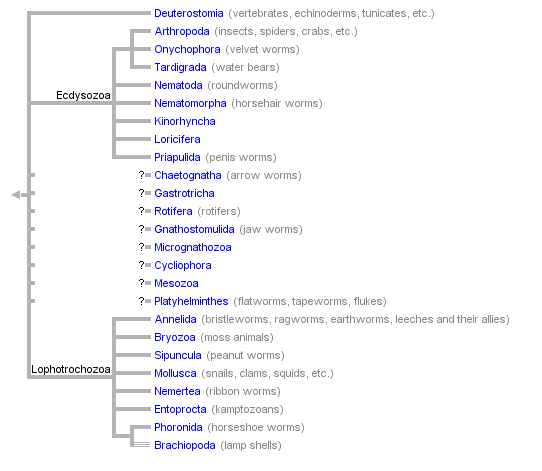
Classification

Figure 1. image of the classification of the Scarabaeus sacer created by Tory Klepsa
Domain: Eukarya- It was placed in this Domain because "the cytoskeleton consisting of tubulin-based microtubules and actin-based microfilaments, and ancestrally including motile cell extensions called ‘flagella’ or ‘cilia’ that contain an axoneme of 9 peripheral microtubular doublets and 2 central microtubules" (Tree of Life 2005).
Kingdom: Animalia- It is placed in Kingdom because it is an animal and clearly not a fungi or plant
Phylum: Arthropoda- It is placed in Arthropoda because "Arthropods have a stiff cuticle made largely of chitin and proteins, forming an exoskeleton that may or may not be further stiffened with calcium carbonate." (University of California Museum of Paleontology 2013).
Class: Insecta- It is placed in Insecta because the "lack of musculature beyond the first segment of antenna" (Tree of Life 2005).
Order: Coleoptera- It is placed in Coleoptera mainly because of the hardening of the Elytron (the front wings) (Tree of Life 2005).
Family: Scarabaeidae- It is placed in the Scarabaeidae because of their powerful legs and the teeth on their legs which strengthens their digging (Tree of Life 2005).
Scientific name: Scarabaeus sacer- It is placed in this
Genus because it has a length of 25 to 37 mm long. Also "the
head of S. sacer has a distinctive array of six projections,
resembling rays.
Like the front legs of other beetles in its genus, but unlike
those of dung beetles in most other genera, the front legs of
Scarabaeus sacer are unusual; they do not end in any
recognisable tarsus, the foot that bears the claws" (Carnivora
2012).
One major distinction that puts the S. sacer in the Arthrpoda Phylum, is their hard outer shell making them an arthropod. Along with this fact, is that insects fall under Arthropoda and insects are the largest group of organisms in the world, putting the S. sacer in a large but unique group.
The S. sacer falls into the Coleoptera suborder. In this suborder these organisms has a few specific characteristics that set them apart.
(Tree of Life 2005).
The Megaloptera is different because its wings do not fold in like the Coleopteras' do. Along with that its body shape is significantly different the Megaloptera has around 11 segmented parts compared to the Coleopteras' 4 (Tree of Life 2005).
Check out different Coleoptera organisms!
Tiger Beetle, Deathwatch Beetle, American Carrion Beetle, Bee-Eating Beetle, and the Darkening Beetle
Click here to learn about their Habitat

